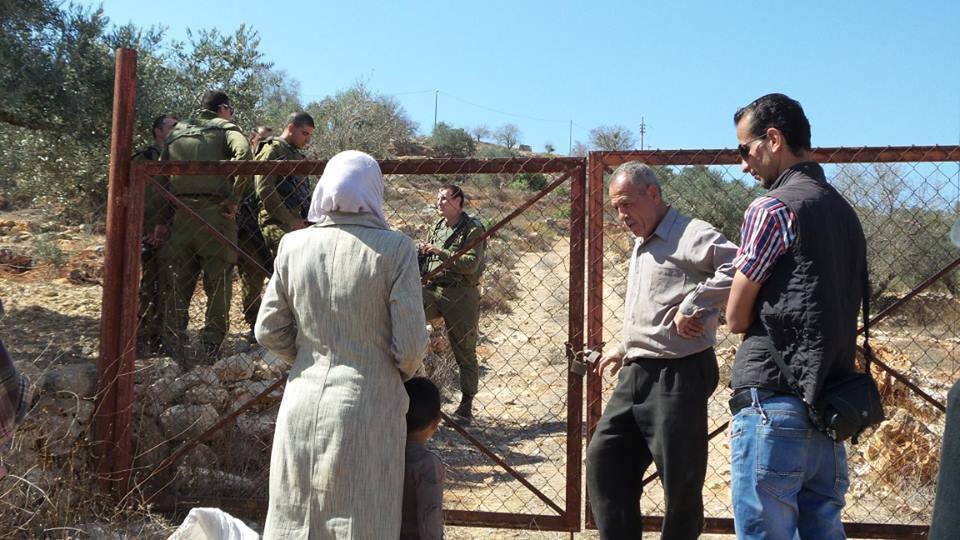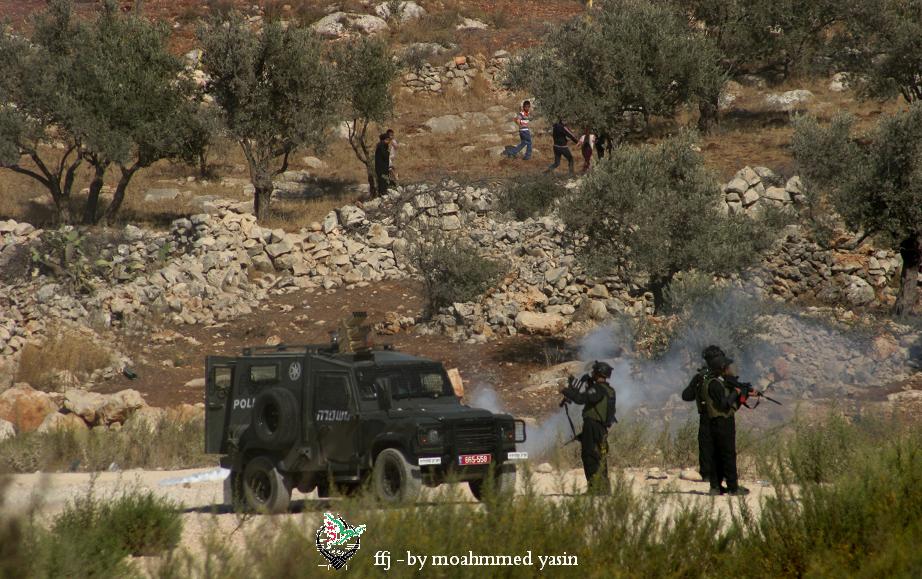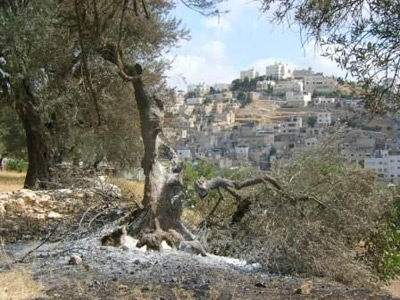Category: Reports
-
A family in Qaryut was stopped by Israeli soldiers from harvesting their olive trees
14th October 2013 | International Solidarity Movement, Nablus Team | Qaryut, Occupied Palestine Yesterday, Sunday 13th October, Palestinian farmers and international activists were picking olives in Qaryut when it was observed that two members of settler security from the illegal settlements of Eli and Shilo were nearby. The settler security then attempted to intimidate the olive…
-
Bil’in continue their weekly demonstration against the occupation
12th October 2013 | Friends of Freedom and Justice | Bil’in, Occupied Palestine Yesterday, 11th October, Israeli soldiers fired tear gas canisters at a Palestinian family while they were attempting to harvest their olives. This coincided with the weekly Bil’in demonstration against the Apartheid Wall where Israeli forces fired tear gas canisters, stun grenades and rubber-coated steel…
-
Illegal settlers prevent family from leaving their home and attack internationals whilst Israeli soldiers watch
Yesterday, 11th October at 7 pm, a group of settlers of the illegal settlement of Tel Rumeida surrounded the entrance of the Azzeh family property and built a wire fence to block the exit. Young settlers fixed the fence in place using plastic cable ties. Hashem Azzeh and his family were about to leave the house…



